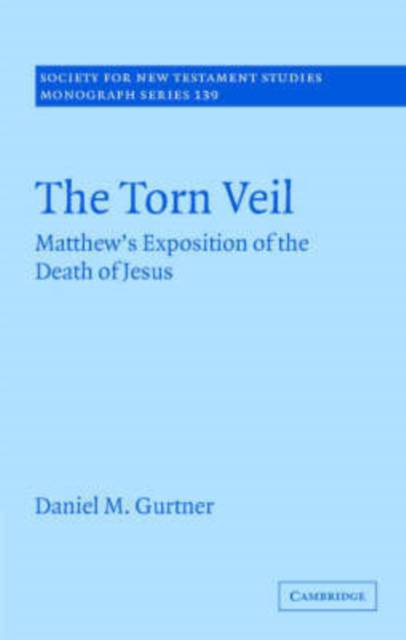
- Afhalen na 1 uur in een winkel met voorraad
- Gratis thuislevering in België vanaf € 30
- Ruim aanbod met 7 miljoen producten
- Afhalen na 1 uur in een winkel met voorraad
- Gratis thuislevering in België vanaf € 30
- Ruim aanbod met 7 miljoen producten
Zoeken
€ 172,95
+ 345 punten
Uitvoering
Omschrijving
In this 2006 text, Daniel M. Gurtner examines the meaning of the rending of the veil at the death of Jesus in Matthew 27:51a by considering the functions of the veil in the Old Testament and its symbolism in Second Temple and Rabbinic Judaism. Gurtner incorporates these elements into a compositional exegesis of the rending text in Matthew. He concludes that the rending of the veil is an apocalyptic assertion like the opening of heaven revealing, in part, end-time images drawn from Ezekiel 37. Moreover, when the veil is torn Matthew depicts the cessation of its function, articulating the atoning role of Christ's death which gives access to God not simply in the sense of entering the Holy of Holies (as in Hebrews), but in trademark Matthean Emmanuel Christology: 'God with us'. This underscores the significance of Jesus' atoning death in the first gospel.
Specificaties
Betrokkenen
- Auteur(s):
- Uitgeverij:
Inhoud
- Aantal bladzijden:
- 320
- Taal:
- Engels
- Reeks:
- Reeksnummer:
- nr. 139
Eigenschappen
- Productcode (EAN):
- 9780521870641
- Verschijningsdatum:
- 15/01/2007
- Uitvoering:
- Hardcover
- Formaat:
- Ongenaaid / garenloos gebonden
- Afmetingen:
- 142 mm x 216 mm
- Gewicht:
- 566 g

Alleen bij Standaard Boekhandel
+ 345 punten op je klantenkaart van Standaard Boekhandel
Beoordelingen
We publiceren alleen reviews die voldoen aan de voorwaarden voor reviews. Bekijk onze voorwaarden voor reviews.











